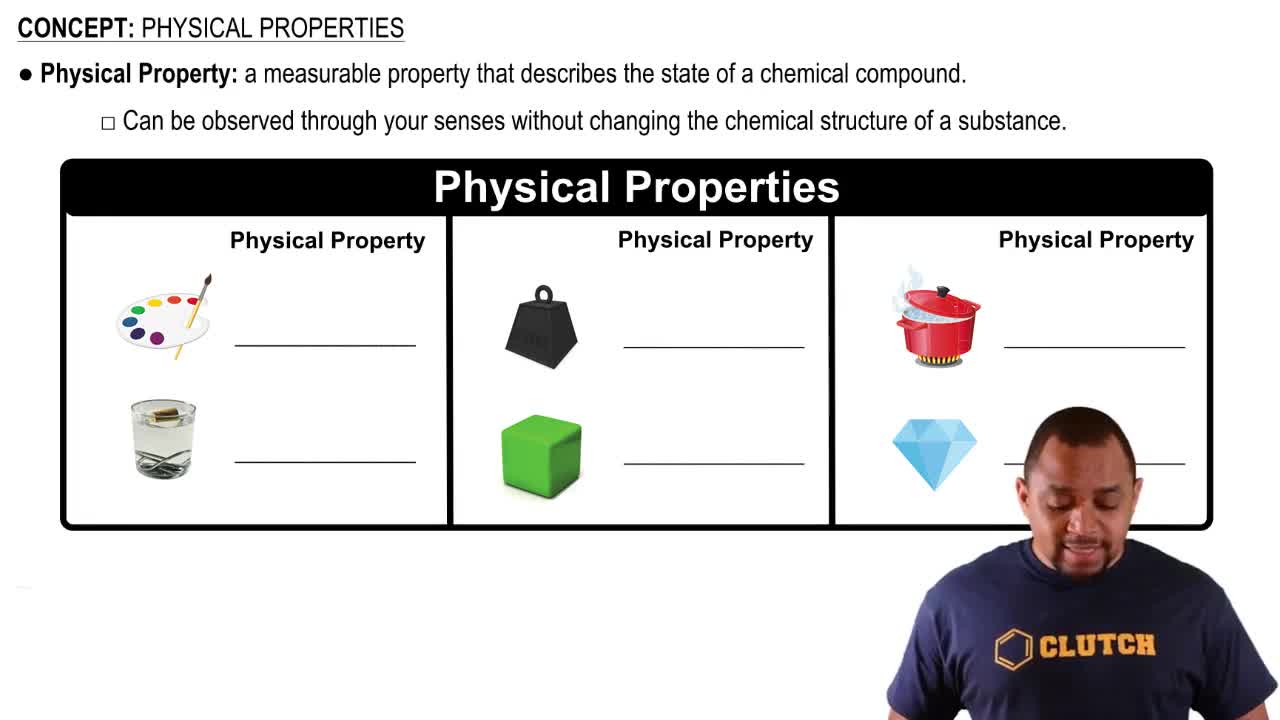Describe each of the following as a physical or chemical property:
e. Propane gas is compressed to a liquid for placement in a small cylinder.
 Verified step by step guidance
Verified step by step guidance Verified video answer for a similar problem:
Verified video answer for a similar problem:



 2:54m
2:54mMaster Physical Properties Concept with a bite sized video explanation from Jules
Start learning